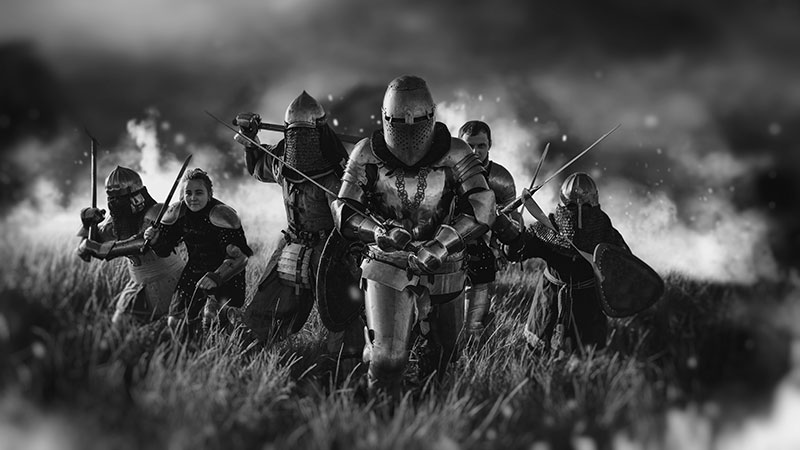Medieval Weapons That Shaped the Face of War and History
The medieval period lasted from the fifth to the fifteenth centuries, and it was one of the most turbulent and revolutionary times in human history, defined by conflict, chivalry, and significant scientific advances.
When it came to conflict, both the East and West had almost similar experiences. In the West, Germanic tribes clashed with Roman Empire soldiers, resulting in the fall of the Western Roman Empire. The Crusades fought to regain the Holy Land from Muslim invaders and other Europeans.
There was also the Hundred Years War between France and England.
China went into turmoil in the East as the Tang Dynasty (which ruled for nearly 300 years) gave way to the turbulent Five Dynasties and Ten Kingdoms period.
During these conflicts, new methods and weapons of warfare were created. Many of these new weapons helped reverse wars and altered how the war was conducted.
In this article, we will look at the most significant weapons invented during the medieval period and how they shaped the face of war.
Swords and daggers
Two swords were used then: a single-handed short sword with a pointy end and a heavier two-handed blade with a rounded end.
Of course, the shape and design of the swords changed over time and varied widely from country to country, but the basic components remained the same.
A sword had a blade. The blade had one or two cutting edges and a sharp or rounded point held in place by a hilt.
The hilt comprised a grip (the wooden or metal handle of the sword), a guard to protect the hand, and a pommel, a counterweight at the top of the handle.
The medieval sword was derived from the Roman spatha with a three-foot-long (80-90 cm) tip. It greatly impacted the Germanic ancient swords during the Migration Period (approximately 300-700 AD).
The Viking sword influenced medieval sword design by having a more acute taper and point and deep fullers running the entire length of the blade.
Between the 8th and 10th centuries, Viking swords were the most popular throughout Europe until they were replaced by a single-handed cruciform sword, which was used from the 11th century until the middle of the 14th century when the longsword came into use.
Longswords had a long blade and massive cruciform hilts, with a grip around 6 inches (15 cm) long. It was often carried with both hands.
A dagger was used for stabbing, and medieval knights commonly carried it as a secondary defense weapon in close combat. Unlike swords, daggers were not widely used as weapons in medieval warfare.
Bows and arrows
The bow was made up of a strip of wood that was bent and held taut by a strip of arrows with a sharp metallic point (arrowhead) that was propelled by the elasticity of the bow’s string.
Even with the introduction of the English longbow, which proved to be a more powerful weapon during the Hundred Years’ War, at the battles of Crecy, Poitiers, and Agincourt, the bow and arrows were still being used even when they were considered a lower class weapon.
The English longbow, of Welsh origin, was 2 meters long and had a range of approximately 656 feet (200 meters).
Trained archers could shoot 6 to 10 arrows per minute, but pulling it took a lot of power and years of practice.
As a result, many medieval armies used the crossbow as it was easier to use. By the end of the Middle Ages, firearms had begun to replace crossbows.
Other weapons
Although the sword was the most used medieval weapon, plenty of other historical weapons were used then.
For example, the knights used a Flail, Morning Star, and Mace, all designed for close battle and inflicting as much damage as possible.
The development of metal armor, which rendered swords useless, resulted in the introduction of other weapons, such as war hammers.
Pole weapons with long shafts, such as spears, halberds, axes, and pikes, also came about, and they were used in close combat battles and were highly efficient as defensive weapons in case of cavalry attacks.
Over the centuries that followed, firearms would become the primary weapons of ground infantry, while mechanized weaponry like tanks and, eventually, planes and helicopters would replace medieval weapons.
While medieval weapons aren’t heavily used in modern warfare, their legacy survives, and their relevancy is still valid. For example, allied soldiers used huge crossbows called sauterelles (French for “grasshoppers”) to shoot grenades during World War I, and modern sniper rifles and helicopters still hold the moniker “longbow.”

